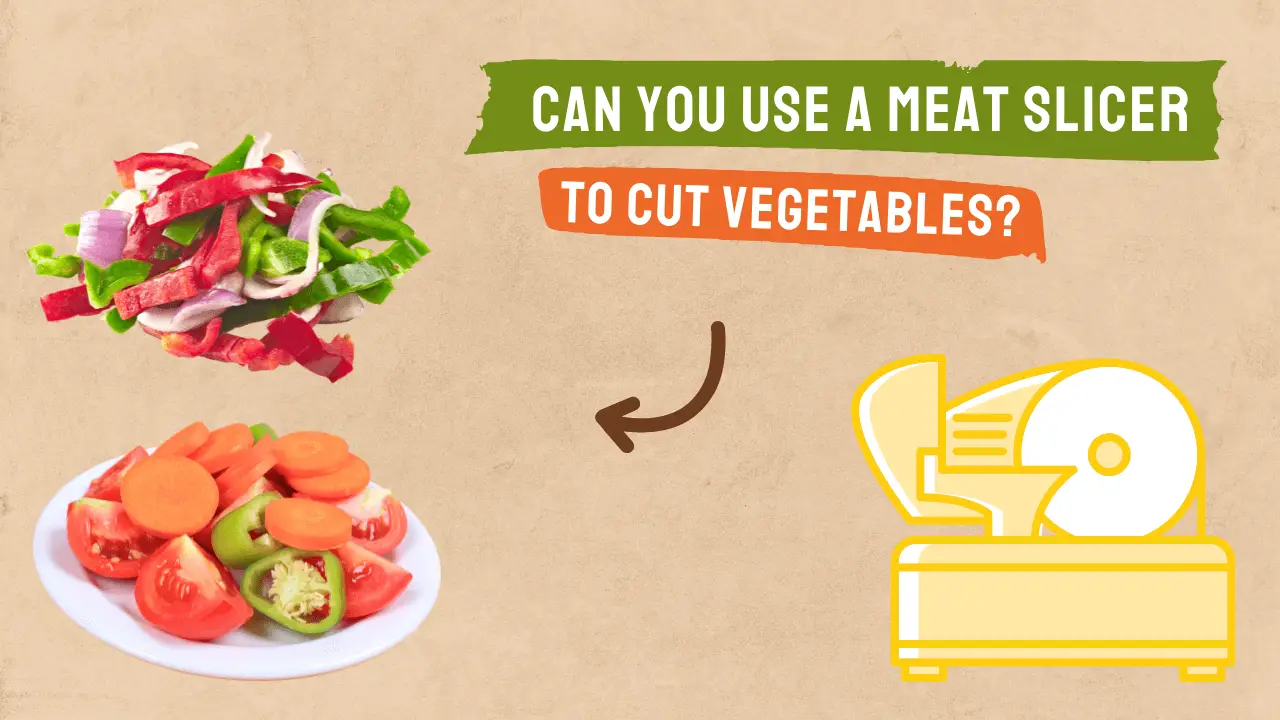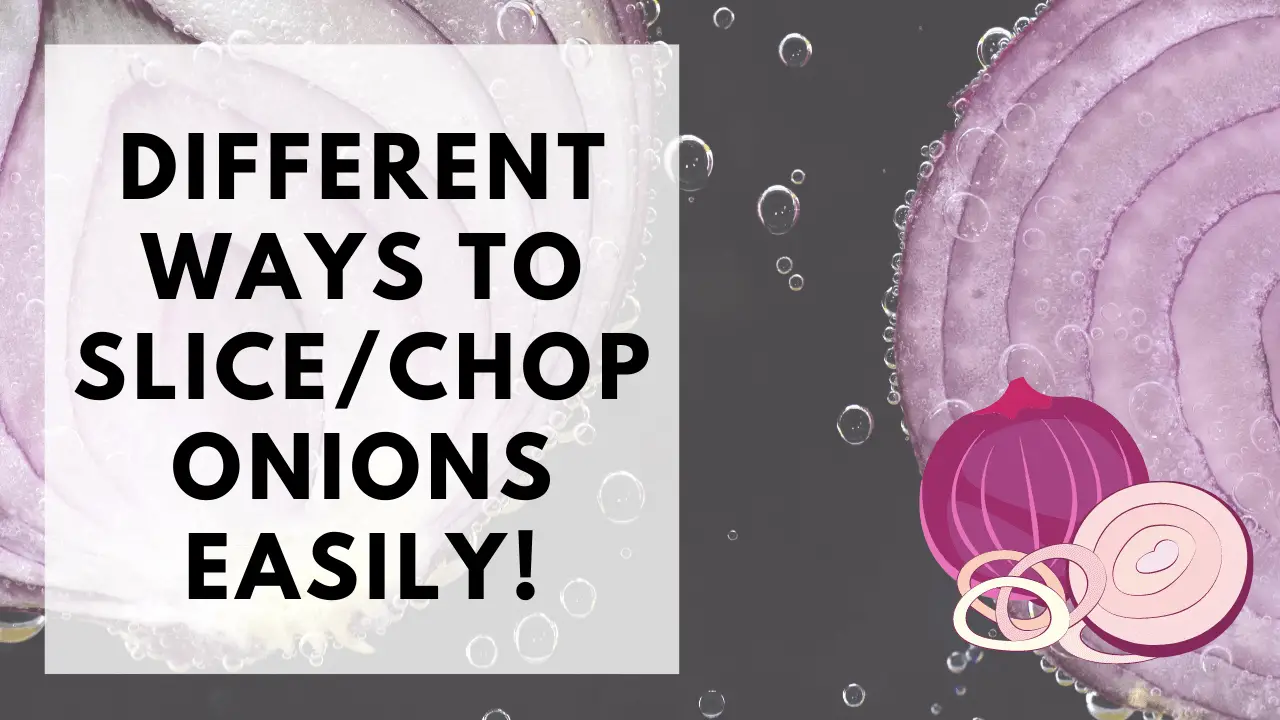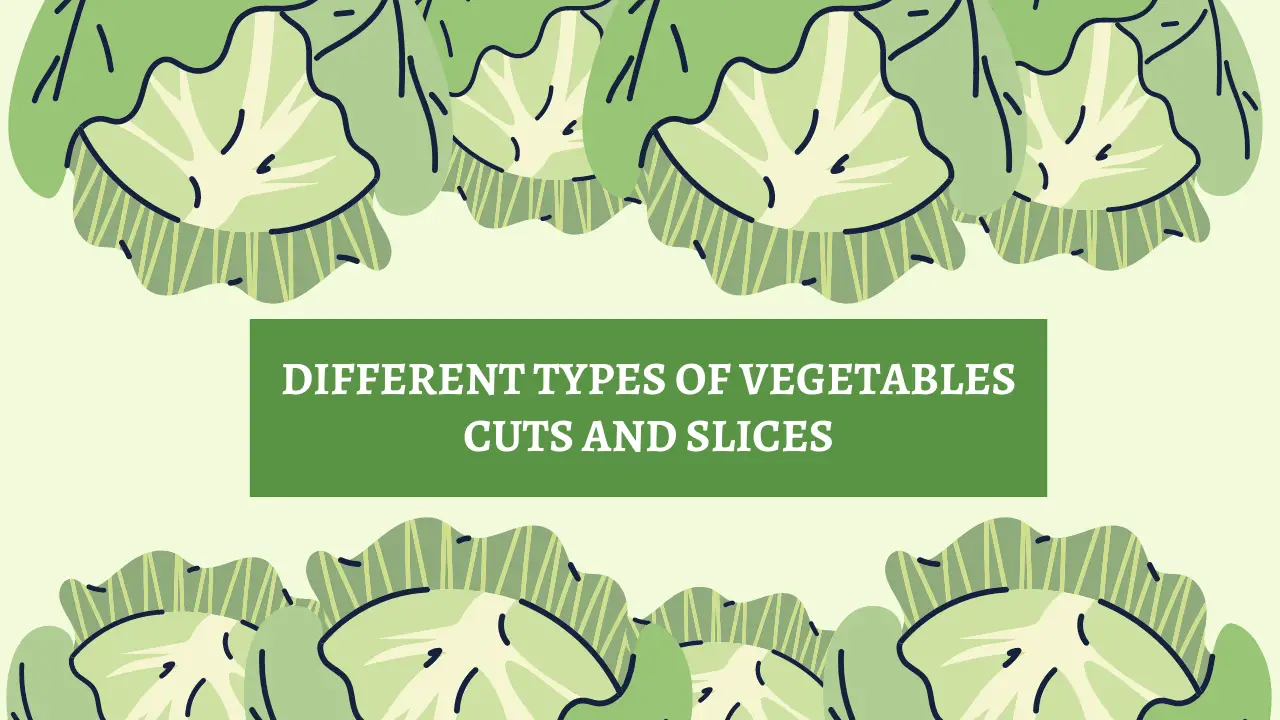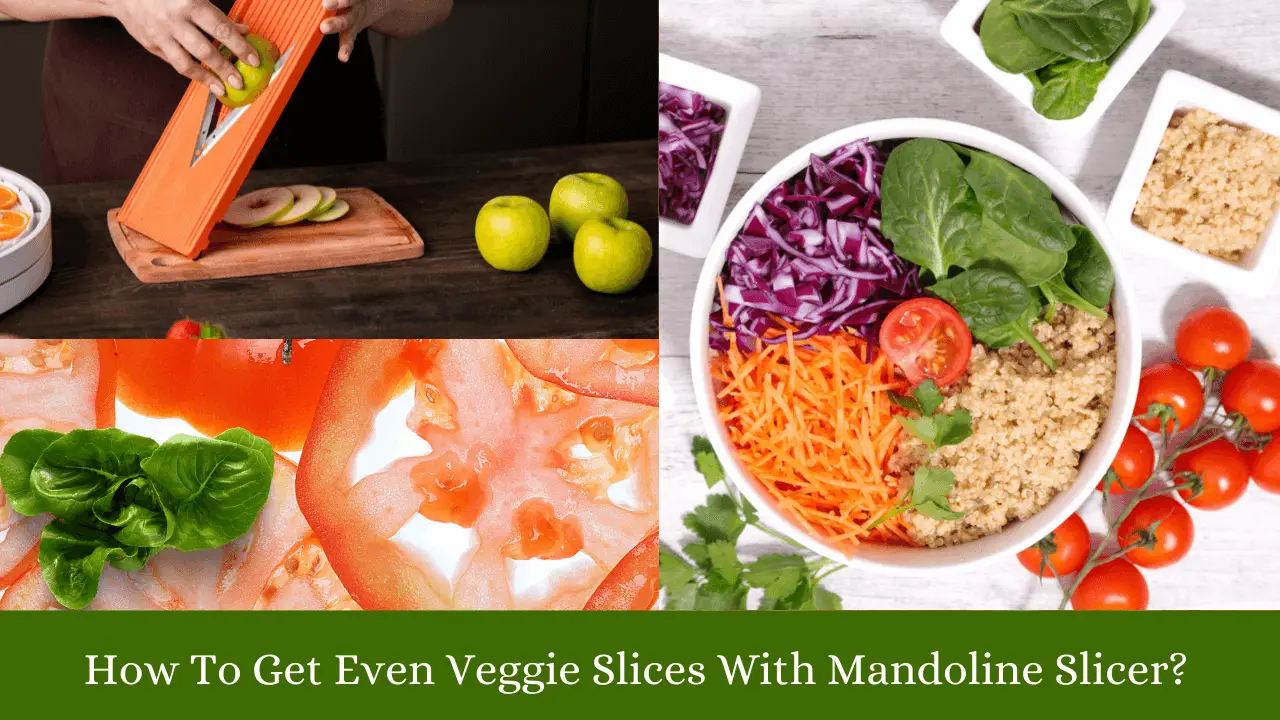Garlic is a versatile ingredient found in kitchens around the world. Not only does it add a unique flavor to various dishes, but it also offers a range of health benefits. Sliced and minced garlic are two common forms of this aromatic ingredient used in cooking. Sliced garlic involves cutting the cloves into thin pieces, which provide a milder flavor and a unique texture to dishes. On the other hand, minced garlic involves chopping the cloves into very small pieces, resulting in a stronger, more intense flavor due to the greater release of the garlic’s natural oils. Both forms have their own applications and can significantly influence the flavor profile of a dish.
What Is Sliced Garlic?
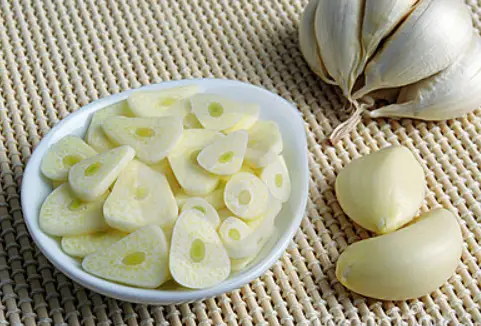
Sliced garlic refers to the thin, flat pieces of garlic cloves cut with a knife or a special slicer. Slicing garlic is a quick and easy way to prepare it for cooking, and the resulting pieces are larger than minced or chopped garlic.
What Is Minced Garlic?
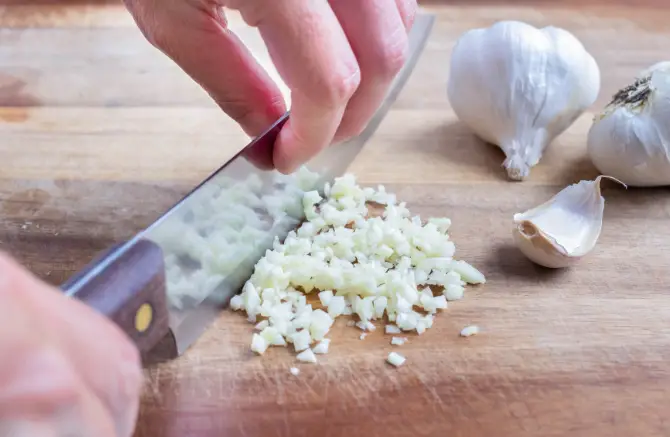
Minced garlic, on the other hand, is finely chopped garlic. It’s created by running a knife through garlic cloves multiple times until the pieces are very small. You can also use a garlic press or food processor to mince garlic quickly.
Sliced vs Minced Garlic
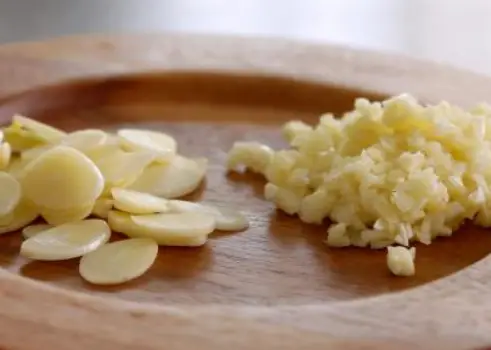
Flavor Profile:
Their flavor profiles are the most significant difference between sliced and minced garlic. Sliced garlic tends to have a milder, more subtle taste, while minced garlic packs a more robust, intense flavor. This is because mincing garlic releases more allicin, the compound responsible for garlic’s spicy taste and aroma.
Cooking Time:
Sliced garlic takes longer to cook than minced garlic due to its larger size. However, this also means sliced garlic is less likely to burn in high-heat cooking, making it an ideal choice for dishes requiring a gentler garlic flavor.
Texture:
In terms of texture, sliced garlic adds a bit of crunch to your dishes, while minced garlic tends to dissolve and blend more seamlessly with the other ingredients. You may choose one to achieve a specific texture, depending on the desired outcome.
Aesthetic Appeal:
Sliced garlic is more visible in dishes, adding an attractive visual element. Minced garlic, on the other hand, is less noticeable, allowing it to blend in with the other ingredients.
Health Benefits
Allicin Release: As mentioned earlier, minced garlic releases more allicin than sliced garlic. Allicin has numerous health benefits, including antimicrobial, anti-inflammatory, and antioxidant properties.
Antioxidant Properties: Sliced and minced garlic contains antioxidants, which help protect our bodies from free radicals and oxidative stress. However, since minced garlic releases more allicin, it generally offers a slightly higher antioxidant content.
Common Uses
Sliced Garlic: Sliced garlic is often used in dishes that require a milder garlic flavor, such as pasta dishes, stir-fries, and roasted vegetables. It’s also a popular choice for garlic bread, as the larger pieces provide a nice crunch and visual appeal.
Minced Garlic: Minced garlic is perfect for dishes with a more pronounced flavor, such as marinades, sauces, and dips. It’s also commonly used in sautés, soups, and stews, as the smaller pieces blend well with the other ingredients and distribute the garlic flavor more evenly.
How To Prepare Garlic?
Slicing Garlic: To slice garlic, peel the cloves and trim the ends. Then, carefully slice the cloves into thin, even pieces using a sharp knife. You can also use a mandoline or specialized garlic slicer for more consistent results.
Mincing Garlic: Peel the cloves and trim the ends to mince garlic. Then, chop the cloves roughly before running your knife through the pieces multiple times, using a rocking motion. Alternatively, you can use a garlic press or food processor to mince the garlic quickly and easily.
Selecting and Storing Garlic: When choosing garlic, look for firm, plump bulbs with tight, unbroken skin. Avoid bulbs with soft spots, mold, or green sprouts, as these are signs of aging or improper storage. To store garlic, keep it in a cool, dry place with good air circulation, such as a wire basket or a mesh bag. Avoid refrigerating garlic, as this can cause it to sprout or become moldy.
FAQs
Can I substitute sliced garlic for minced garlic or vice versa?
Yes, you can substitute one, but remember that the flavor intensity and texture may differ. You might need to adjust the quantity to achieve the desired taste.
Is pre-minced garlic from a jar as good as fresh minced garlic?
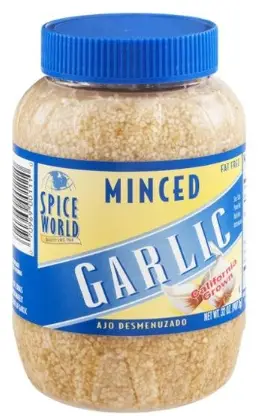
While jarred minced garlic is convenient, it often lacks the flavor and aroma of fresh garlic. Opt for fresh garlic to get the most out of your dishes whenever possible.
How long does garlic last in storage?
Properly stored garlic can last up to several months. However, its shelf life will depend on the garlic’s storage conditions and freshness when purchased.
Can I freeze garlic?
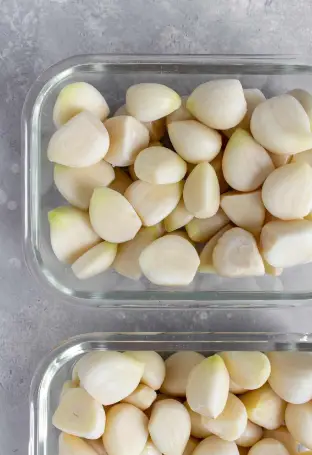
You can freeze peeled or unpeeled garlic cloves in an airtight container. Frozen garlic may lose some texture but retains its flavor and health benefits.
How can I reduce garlic breath after consuming garlic-heavy dishes?
Chewing on fresh parsley, mint, or a glass of milk can help neutralize garlic odors. Brushing your teeth and using mouthwash will also help.
Can a garlic press or pre-chopped bottled garlic be used when a recipe requires minced or chopped garlic?
Yes, using a garlic press or pre-chopped bottled garlic is possible when a recipe requires minced or chopped garlic. However, a garlic press may yield a slightly finer texture than minced garlic, while pre-chopped bottled garlic may have a less intense flavor than fresh garlic. It’s essential to consider these factors when substituting and adjust the recipe accordingly.
How many teaspoons of minced garlic equals a clove?
One medium-sized garlic clove is equivalent to approximately 1 teaspoon of minced garlic. However, this can vary depending on the size of the clove, as larger cloves may yield up to 1.5 teaspoons, while smaller cloves may provide only 0.5 teaspoons of minced garlic.
Conclusion
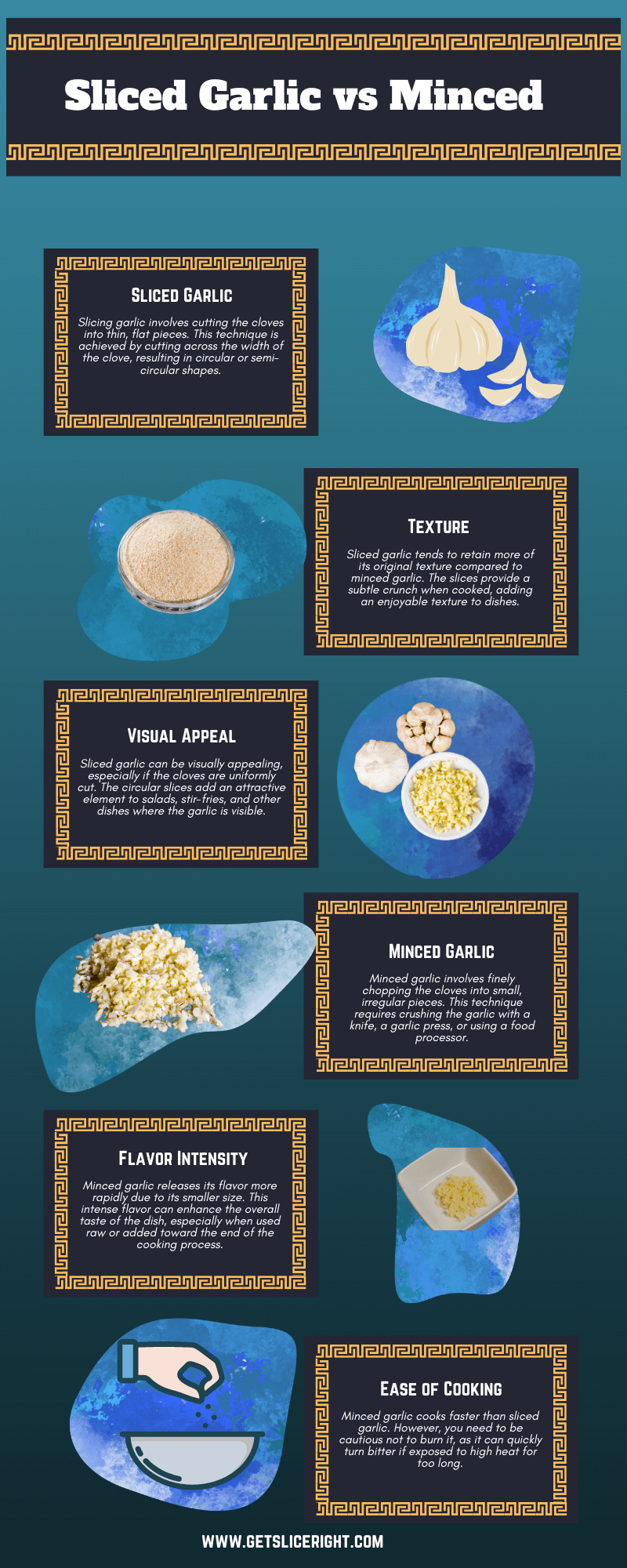
Sliced and minced garlic has unique characteristics and uses in the kitchen. Depending on your preferences, the dish you’re preparing, and the desired flavor profile, you might choose one. Experimenting with both forms of garlic will allow you to discover new culinary possibilities and enhance your cooking skills.
External Links
- Allicin: Chemistry and Biological Properties: Learn more about allicin, the compound responsible for garlic’s pungent taste and aroma.
- Selecting and Storing Garlic: Discover more tips on choosing and preserving garlic for maximum freshness and flavor.
- Health Benefits of Garlic: Explore the various health benefits of garlic, including its antimicrobial, anti-inflammatory, and antioxidant properties.
Table 3: Sliced Garlic vs Minced Garlic
| Attribute | Sliced Garlic | Minced Garlic |
|---|---|---|
| Flavor Profile | Milder, more subtle taste | Stronger, more intense flavor |
| Cooking Time | Takes longer to cook | Cooks quickly |
| Texture | Crunchier, more visible | Finer, blends seamlessly |
| Aesthetic Appeal | More noticeable in dishes | Less visible |
| Health Benefits | Contains allicin and antioxidants, but in lesser amounts | Higher allicin and antioxidant content |
| Common Uses | Pasta dishes, stir-fries, roasted vegetables, garlic bread | Marinades, sauces, dips, sautés, soups, stews |

Mario Batali is a renowned author, food enthusiast, and passionate chef who has dedicated his life to exploring the world of culinary arts. With a love for sharing his knowledge and experiences, Mario has become a prominent figure in the food blogging community, inspiring countless readers with his creativity and expertise.
In addition to his culinary prowess, Mario Batali is also a talented writer with a flair for engaging storytelling. He launched his own food blog to share his recipes, cooking tips, and personal experiences in the kitchen. Over time, Mario’s blog gained a loyal following of food enthusiasts who appreciate his unique approach to cooking and his dedication to using only the finest ingredients.
Mario Batali’s passion for food and his commitment to sharing his knowledge with others have made him a true inspiration in the world of culinary arts. Through his blog, cookbooks, and public appearances, Mario continues to spread his love of food and the joy of cooking with his ever-growing fanbase.


